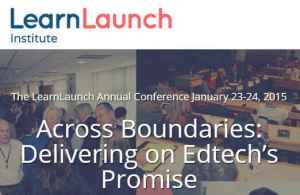
Paul Emerich France, a National Board Certified Educator, reading specialist, and classroom teacher in Chicago, wrote the article “Personalized Learning is a Problem of Privilege” for EdSurge. I’ll use this post to share my thoughts (in indented green).
– – – – – – – – – –
Personalized Learning Is a Problem of Privilege
By Paul France | Jan 21, 2018
Education is a dynamic space, with new trends constantly ebbing and flowing, the pendulum swinging back and forth between truly new innovations and recycled ideas. Experienced educators will recognize these patterns. But for younger teachers like me, whose careers are still in their infancy, it’s not so easy to see through the blinders.
When I moved to the Silicon Valley in 2014, I, like many, joined the gold rush to pursue this idea called “personalized learning.” I thought it was a panacea. I truly believed that tech-powered personalized learning could be the answer education was waiting for.
Call that what you want—a misguided, naive, idealist, arrogant optimism. Perhaps the idea of personalized learning as a panacea is all of those things—or none of them. But I’ve come to learn that the label “personalized learning,” or whatever the next big thing is called, doesn’t matter. What matters more is challenging the underlying assumptions and social structures that breed inequitable ideas that do not serve what teachers and students actually need.
I don’t regret my time in the Valley, though. It taught me some important lessons that I will take with me for the rest of my career. After three years there, here’s what I’ve learned.
I’ve learned that personalized learning doesn’t necessitate technology use.
We often conflate individualization with personalization. To sustainably individualize every child’s education, it helps to have the assistance of a complex technological algorithm to assign activities to children. But this happens at a cost. Using an algorithm to determine what children see is impersonal and dehumanizing. This approach focuses on consumption of educational material instead of interaction with meaningful provocations.
Without definitions, it’s impossible to gauge Mr. France’s use of “individualization” and “personalization” and how they differ from one another. That said, “assistance of a complex technological algorithm” is not necessarily the same thing as “using an algorithm to determine what children see.” First, the best definitions of personalizing learning are founded on educators being supported by technology, not replaced by it. Second, there may be areas where technology does an equal or better job (self-driving cars are a good analogy here), freeing up the educator to focus his or her time and energy in other ways. There’s nothing in any reasonable interpretation or implementation of personalized learning that “focuses on consumption of educational material instead of interaction with meaningful provocations.”
For context, let’s again turn to the Center for Collaborative Education’s definition of personalized learning.
Personalized Learning tailors the educational experience for every student by embracing individual strengths, needs, interests, and culture, and elevating student voice and choice to raise engagement and achievement. Personalized learning takes place within the context of educational equity, providing culturally responsive learning environments and equitable educational opportunities for all students.
I see why this way of thinking prevails, though, as I used to subscribe to it. The scope of skills taught in schools is relatively narrow, and at first, it’s reasonable to assume that the right arrangement of activities on a playlist, or the correct sequence of Khan Academy videos, could meet the needs of all children.
I’ve come to learn that this way of thinking is reductive, at best. It’s simply a more sophisticated version of an industrialized model for education, moving kids through a customizable assembly line, adding quizzes, games, and videos at different rates and in different orders.
It’s important to recognize that not all technology is bad. Tools that minimize complexity, make educators more powerful, connect individuals, or redefine learning tasks can contribute to a more personal learning environment. Tools like Seesaw help children create multidimensional digital portfolios and let their parents partake in their learning journeys; apps like iCardSort and Popplet allow children to explore abstract thinking; programs like Google Earth and Skype can connect faraway people and places, redefining what sorts of experiences can take place within the four walls of the classroom.
It’s just important to remember to ask ourselves why we’re using technology, and to make sure that it is making learning personal by amplifying our humanity, not limiting it.
Second, I’ve learned that personalized learning is a problem of privilege, and that education’s problems are mainly systemic.
Technologists and their wealthy funders often hypothesize that the problems afflicting education can be amended through digital tools. But many sometimes fail to acknowledge the role that privilege and inequity play in perpetuating injustice, and instead presume that tech tools that individualize will “close the achievement gap.” Schools in affluent communities can access these technology tools easily, while schools in low-income areas—and which, generally speaking, disproportionately serve communities of color—do not have access to these tools. But even if they did, I think they’d find that personalized learning is not a need at all, and that there are more pressing matters to address.
France’s argument here better supports the case for making effective personalized learning available to all than it does for suppressing the benefits of effective personalized learning for the privileged.
Many “personalized learning” tools don’t fulfill real needs. Rather, they serve perceived needs that have been fueled by privilege. Parents don’t need immediate, real-time updates on their child’s progress, and they don’t need their child’s education to be individualized. Modern society’s desire for instant gratification and boundless transparency has convinced us that these are real problems, when in reality, they’re simply socially constructed preferences.
I agree that parents don’t need “immediate, real-time updates on their child’s progress,” but I can’t see why they (and their children) wouldn’t benefit from effective individualized education (which is not remotely the same thing as “boundless transparency”).
What children need more are well-trained, well-compensated teachers who work in emotionally-safe environments where sustainability and humanity are valued above all else. But most schools are hardly able to pay teachers equitably, nonetheless train them to hone their practice, develop engaging curriculum or even use existing technologies effectively.
What if all the billions in private capital that support the edtech industry were matched by an equal commitment to supporting our educational infrastructure? I’d like to see that kind of money invested to create a sustainable system for teaching and learning, one that actualizes a democratic vision for education by combating privilege and promoting equity within and between schools.
Schools spend something on the order of 5% of their budget on curricular materials (including edtech and infrastructure). Even in a tech-intensive environment, that number won’t top 10%. Shifting a portion of that spend to support “our educational infrastructure” doesn’t provide enough funding to appreciably move that needle. And, technology offers the promise of helping to reduce the bigger piece of the pie—educator cost. With good edtech, I argue, a smaller number of better supported teachers will be able to get better outcomes at a lower cost. Are we there yet? No. Should we try to get there? Yes.
By neglecting to do so—and by choosing to invest in technology instead of people—we only deepen the divide between school districts, perpetuating compounding cycles of privilege and oppression that will only continue to widen the gap between high- and low-income schools.
Most importantly, I’ve learned that we need to work together.
There is no panacea or silver bullet that will solve the great problem of education. Relying on venture capitalism to solve perceived problems through tech-powered personalized learning only perpetuates systems of inequality, especially if only schools in high-income, predominantly white areas can access them.
No one is proposing that we rely on venture capitalism to improve our schools. Schools will improve our schools, in part through the traditional and digital education materials that they purchase. The funding model behind the organizations that offer these materials is immaterial.
No one idea, product or organization will be able fix it alone. This is the danger of the capitalist, winner-takes-all hero mindset. It hardwires self-interest within us, a self-interest that made me want to work in Silicon Valley. I wanted to be a 21st-century knowledge worker, and I wanted to hit it big by doing something cool in technology. Blinded by my own privilege, self-interest got the best of me. I focused too much on success in the education technology world and, as a result, began to lose fulfillment in the day-to-day of teaching. I felt disconnected and disempowered, and it was because I lost perspective on what really mattered.
We need to let go of the self-interest that capitalism has instilled in us. We need to work together and support each other, not perpetuate a theory laden with privilege for the purpose of capital gain.
In actuality, it’s the system that’s broken—not necessarily the people in it. I met incredible, intelligent people in Silicon Valley: teachers who were passionate, creative, and knowledgeable; technologists who thought radically differently than I did and pushed my thinking about what was possible in the classroom. But privilege and a capitalist mindset clouded our understanding of which problems really need to be solved in education.
It’s a well known adage in Silicon Valley to “fail fast.” As I tell my students, there’s nothing wrong with failing and being wrong, as long as you make a change and avoid making the same mistakes repeatedly. Education technology needs to learn from its mistakes, and I believe that getting back in touch with the principles of human-centered design will help education enthusiasts get back in touch with what really matters in schools. After all, people who know better, do better.
The central purpose of personalized learning–as implemented by educators, not providers of educational materials–is to get in touch with human-centered principles.
To be fair, educators also need to learn from their failures. One example is elementary reading. There’s clear research that shows how intervention can work best to help struggling readers. But too many reading teachers instead choose a “whole language” model that’s proven to be less effective.
It’s a flawed approach to criticize the new thing without taking a hard look at how well the old thing is working (or not).
To France’s original question, is personalized learning a problem of privilege? In my view no. Implemented well, personalizing learning offers the promise of helping to level the playing field, not tilt it.

 STEM–the combined educational disciplines of Science, Technology, Engineering, and Mathematics–“was first ‘coined’ as an educational term by the National Science Foundation (NSF) in the early 2000s.” [
STEM–the combined educational disciplines of Science, Technology, Engineering, and Mathematics–“was first ‘coined’ as an educational term by the National Science Foundation (NSF) in the early 2000s.” [


